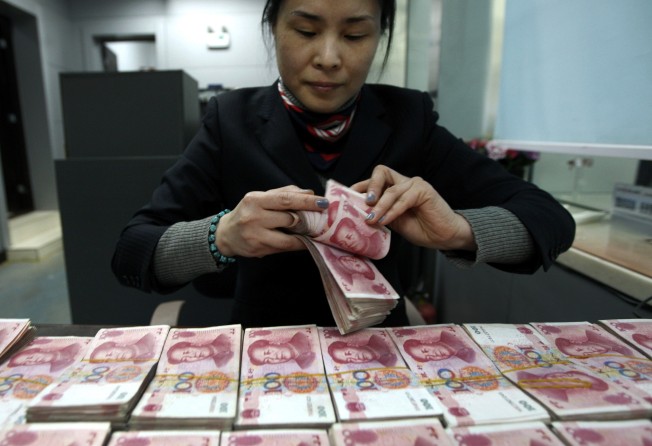
Chinese bond momentum remains strong, but don’t expect the yuan rally to last
- Aidan Yao says a number of factors are supporting the bond market, including easing measures by the central bank and the bonds’ inclusion in the Bloomberg global index. By contrast, downside risks are likely to keep the recent yuan rally in check

The Chinese bond market got off to a solid start in 2019, building on the strong momentum from last year that saw China buck the global trend to deliver positive returns to investors.
The onshore rates rally continued in January, thanks to further easing by the People’s Bank of China and strong foreign demand for renminbi bonds – prompted, at least partly, by expectations that China would soon be included in the global fixed-income benchmark.
However, the bigger price action occurred in the credit market, particularly hard-currency (US dollar) Chinese high-yield bonds, where credit spreads have plunged in the past month. A confluence of factors have driven a sharp market reversal from last December, including positive signs in the Sino-US trade talks, a solid rebound in risk sentiment, and a repricing of the Federal Reserve’s policy that undermined US treasury yields and the dollar.
The Chinese macroeconomic backdrop also remained supportive of the bond market. With recent economic data generally undershooting market expectations, the authorities have stepped up policy easing to allay growth concerns. Besides further tax cuts and increased spending on infrastructure, the PBOC has also dialled up monetary stimulus by cutting the reserve requirement ratio, and injecting liquidity via open-market operations and the new targeted medium-term lending facility (TMLF).

The recent introduction of the central bank bills swap (CBS) has opened a new official avenue to support bank lending as it means their perpetual bonds are eligible to tap central bank liquidity. The programme will help boost banks’ tier-1 capital, and in turn allow them to step up their credit supply to the real economy.
Rather than simply adding liquidity, which is already abundant in the financial system, the authorities need to focus on unclogging monetary transmission to allow excess liquidity to flow to real sectors of the economy. The central bank bills swap, along with other recently announced measures such as the TMLFs, is aimed precisely at doing so.
Continued strong foreign inflows to China’s fixed-income markets further aided the bond rally. Part of these, particularly to the offshore credit market, were simply a reversal of the capital exodus from December. But, for the onshore market, the rising demand is, at least partly, driven by growing expectations that Chinese bonds will soon become part of the global fixed-income benchmarks.
Indeed, Bloomberg confirmed in late January the inclusion of China’s sovereign and policy bank bonds in its flagship Global Aggregate Index from April. With a proposed 6 per cent weighting and an estimated US$2-US$2.5 trillion in assets under management tracking the benchmark globally, the inclusion is expected to bring US$120-US$150 billion to the onshore bond markets over the coming 20 months.
To facilitate easier market access, the China Security Regulatory Commission has pledged to merge two programmes for investors – the Qualified Foreign Institutional Investor and Renminbi Qualified Foreign Institutional Investor schemes – and expand the availability of instruments (for example, margin financing, repurchase agreements, and over-the-counter market access) to foreign investors. These moves could help China win approval from other global index operators, such as the FTSE Russell and JPMorgan Emerging Market Bond Index, and extend the momentum of capital inflows in the year ahead.
In the currency space, the move has also given the renminbi a shot in the arm.
In January, the yuan appreciated 2.6 per cent against the US dollar and 1.6 per cent against its trade-weighted basket, according to the Bank for International Settlements, halting its losing streak since last June. The fact that the renminbi was among the best performing currencies last month, and has gained strongly in both nominal and real effective terms, suggest genuine strength in the currency, reflecting a shift in investor expectations.
However, whether this shift represents a change of direction for the renminbi remains highly uncertain. Indeed, with the Chinese economy still expected to lose steam, monetary easing to be stepped up further, and the current account to swing to negative, the fundamentals do not look good for an extended currency rally over the medium term.
Hence, caution is still warranted for the yuan. The balance of risks is still tilted to the downside, in line with our expectations of a treacherous path ahead for Sino-US economic relations.
Aidan Yao is a senior emerging Asia economist at AXA Investment Managers